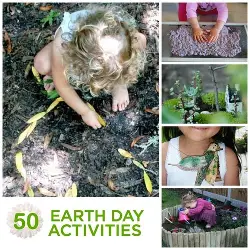
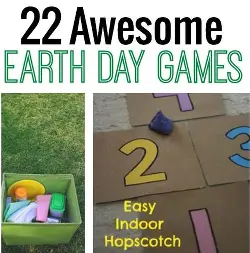
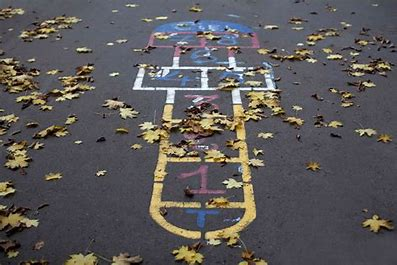
Here’s a list of fun, hands-on Earth Day games and activities for kids that mix play with learning about caring for the planet:
🌱 Outdoor Games
- Recycling Relay Race – Set up bins labeled paper, plastic, metal, etc., and have kids race to sort items into the correct bin.
- Nature Scavenger Hunt – Give kids a checklist of natural items to find (smooth rock, feather, pinecone, yellow flower, etc.).
- Plant-a-Tree or Flower Challenge – Kids team up to dig, plant, and water a new plant.
- Trash to Treasure Contest – Collect litter, then see who can turn it into the most creative art or craft.
- Earth Day Obstacle Course – Include stations like “pick up the litter,” “plant a seed,” and “save the water” (carrying a cup without spilling).
🎨 Creative Activities
6. Earth Day Mural – Kids draw or paint a giant “Love Our Planet” scene together.
7. Nature Collage – Use leaves, twigs, petals, and seeds to make art on cardboard.
8. Upcycled Crafts – Turn cereal boxes into organizers or tin cans into planters.
9. Make Seed Balls – Clay, compost, and seeds rolled together for planting later.
10. Recycled Instrument Band – Create drums from buckets, shakers from bottles, etc., and have an “Earth Day concert.”
🧠 Educational Fun
11. Earth Day Trivia – Ask kid-friendly questions about recycling, animals, and nature.
12. Water Conservation Challenge – Kids brainstorm ways to save water, then act them out like charades.
13. Compost Sorting Game – Show pictures or real items, and kids decide if they’re compostable, recyclable, or trash.
14. “Who Am I?” Animal Guessing Game – Give clues about endangered animals and have kids guess.
15. Energy Detective – Kids “inspect” a room to find where energy is being wasted (lights left on, chargers plugged in).
If you want, I can put these into a bright, printable Earth Day Activity Sheet for kids with illustrations so it looks like a fun game board or checklist they can color in. That way it’s ready for classroom or home use.
- Visit a Forest Preserve, Nature Center or State Park
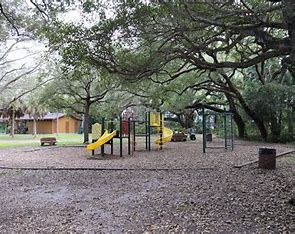

Request that the manager or park ranger meet with the children. Enquire about the ranger’s work and what makes it so fulfilling.
Asking the ranger to take the students on a walk in the woods is another option. Invite the park ranger to your location if you are unable to go on a field trip.
2. Raise Money


Here are some fun and eco-friendly ways kids (and families) can raise money for Earth Day causes, like tree planting or wildlife protection:
🌱 Eco-Themed Fundraisers
- Plant Sale – Grow seedlings or small potted plants and sell them to neighbors or at school.
- Recycled Craft Sale – Make jewelry, tote bags, or art from upcycled materials and sell them.
- Bake Sale with a Twist – Sell treats made with local or organic ingredients.
- Seed Packet Fundraiser – Create decorative seed packets for flowers, herbs, or vegetables.
- Eco-Fair Booth – Host games, trivia, or recycling challenges for small donations.
🚶♀️ Activity-Based Fundraisers
6. Sponsored Nature Walk – Friends and family pledge money for each mile or step completed.
7. Trash Pickup-a-Thon – Raise pledges for each bag of litter collected.
8. Bike Ride Challenge – Get pledges for each lap or kilometer biked.
9. Read-a-Thon – Kids read eco-themed books and get sponsorships per book or chapter.
10. Eco-Obstacle Course – Charge a small entry fee and include stations like planting seeds, sorting recyclables, and carrying “water.”
🎨 Creative Donation Ideas
11. Earth Day Art Auction – Kids create nature-inspired art and auction it to parents or community members.
12. Photo Contest – Charge a small entry fee for best nature photo; winners get eco-friendly prizes.
13. T-shirt Printing – Design and sell “Love the Earth” shirts using eco-friendly inks.
14. Reusable Bag Decorating – Sell plain cloth bags and offer a decorating station.
15. Storytelling or Music Event – Perform songs, poems, or stories about the Earth and ask for donations.
If you want, I can combine this fundraising list with your Earth Day games and activities into a single kid-friendly event plan so it’s like a full “Earth Day Fair” guide. That way you’d have games, activities, and fundraisers in one place. Would you like me to make that?
3. Present Environmental Information
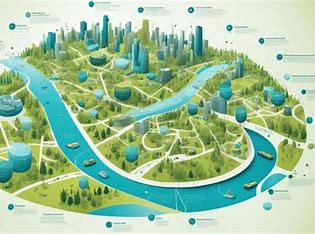
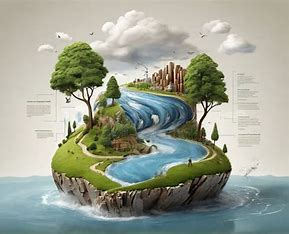
Students from elementary and middle schools can give presentations on environmental issues.
4. Volunteer


Volunteering is one of the most hands-on, impactful ways to celebrate Earth Day every day, because it puts your time and energy directly into helping the planet. Here are some ideas for eco-friendly volunteer activities you can do regularly:
🌿 Environmental & Nature Conservation
- Park or Beach Cleanups – Join local cleanup events or organize your own with friends.
- Tree Planting Drives – Partner with groups that restore forests or urban greenery.
- Wildlife Rehabilitation – Volunteer at animal rescue centers or sanctuaries.
- Community Gardens – Help grow fresh produce and maintain green spaces.
- Invasive Species Removal – Work with environmental organizations to protect native plants.
🏙 Community-Based Projects
- School Garden Programs – Teach kids about composting, planting, and sustainable food.
- Recycling Initiatives – Assist in sorting drives or awareness campaigns.
- Urban Greening Projects – Plant shrubs, flowers, and trees in public areas.
- Environmental Education Events – Lead workshops or nature walks.
💡 Specialized Skills Volunteering
- Photography or Design – Create promotional materials for eco organizations.
- Writing or Social Media – Help NGOs spread their environmental message online.
- Engineering or Tech Skills – Assist in renewable energy or conservation tech projects.
- Fundraising & Grant Writing – Support nonprofit programs with the resources they need.
If you want, I can also compile a list of well-known local and international environmental organizations where you can sign up to volunteer, along with how to join them. Would you like me to prepare that?
5. Guest Speaker


Bring a local environmental organization’s president or director to your program.
Find out what the organisation does, why these individuals volunteer, and how they developed an interest in environmental issues.
6. Make Play Dough
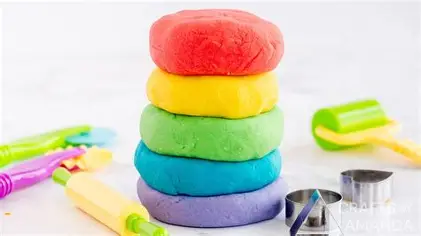
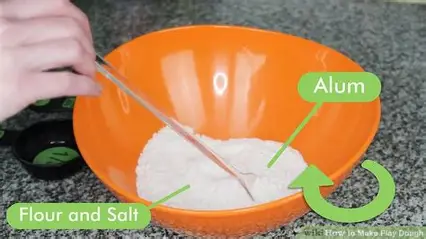
Here’s a simple, safe, and fun homemade play dough recipe you can make in English:
🌈 Ingredients:
- 2 cups all-purpose flour
- 1 cup salt
- 2 tablespoons cream of tartar (for softness)
- 2 tablespoons vegetable oil
- 1 ½ cups water
- Food coloring (optional)
- Glitter or scents (optional, for fun)
🌀 Instructions:
- Mix dry ingredients – In a large pot, combine flour, salt, and cream of tartar.
- Add liquids – Stir in water and vegetable oil. Add a few drops of food coloring if desired.
- Cook over medium heat – Stir constantly until the mixture thickens and forms a ball.
- Cool & knead – Remove from heat and let cool slightly. Knead until smooth and stretchy.
- Store – Keep in an airtight container or zip bag to prevent drying out.
✨ Tips for Extra Fun:
- Add vanilla or lemon extract for a nice smell.
- Mix in eco-friendly glitter for sparkle.
- Use natural colors from beet juice, turmeric, or spinach water for an Earth-friendly version.
If you’d like, I can also give you a no-cook play dough recipe that’s quicker and kid-friendly. Would you like me to prepare that next?
7. Make Plaster Casts of Animal Tracks
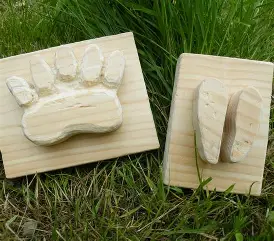

Create plaster casts of whatever animal footprints you come across in the forest. They can be found close to water sources, feeding areas, and paths.
After recognising the animal, the children can conduct research on it to learn about its size, diet, habitat, and number of children.
They can also investigate the animal’s interactions with other forest inhabitants.
8. Wood Walker Diaries
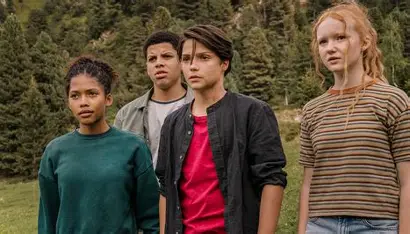
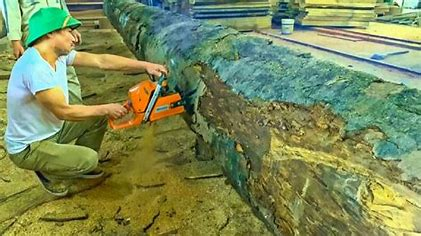
“Wood Walker Diaries” sounds like the title of a nature-themed journal or story collection.
Here are three possible interpretations you could use, depending on your purpose:
1. As a Story Concept
“Wood Walker Diaries” could be a series of fictional tales told from the perspective of a forest wanderer — someone who roams the woods, observing wildlife, uncovering hidden paths, and meeting mysterious woodland creatures. Each “diary entry” could capture a different day’s adventure.
Example opening:
Day 17 — The morning fog curled low among the pines today, muffling my footsteps. I followed the deer tracks until they vanished at the edge of the marsh. Somewhere in the distance, a woodpecker drummed a steady rhythm — a heartbeat for the forest.
2. As a Real-Life Nature Journal
You could create your own “Wood Walker Diary” by documenting real walks in nature:
- Date & Location – Where you walked.
- Weather – Temperature, clouds, wind, etc.
- Wildlife Sightings – Birds, insects, mammals, plants.
- Personal Reflections – How the walk made you feel or what you noticed.
- Sketches or Photos – Capture moments visually.
3. As a Blog or Social Media Series
Turn it into a digital project where you post diary-style entries after each nature walk.
- Could include short stories, photos, and eco-tips.
- Perfect for inspiring others to spend more time outdoors.
If you want, I can write the first full “Wood Walker Diary” entry for you — either fictional and mystical, or based on real-world nature observations. Which style would you like?
9. Look for Animal and Bird Homes While on a Walk
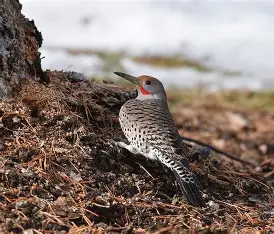

Look for signs of a woodpecker’s presence, including as nests, tunnels in the ground, hiding spots in trees, or holes drilled in trees.
10. Springtime Walk in the Woods


Here’s a short, vivid piece for “Springtime Walk in the Woods” in English:
Springtime Walk in the Woods
The forest is alive again. Soft sunlight filters through the tender green leaves, dappling the path in gold. A chorus of birdsong floats on the breeze, joined by the gentle rustle of squirrels chasing each other through the branches.
Beneath your feet, the earth is damp and fragrant — a rich mix of soil, moss, and fallen petals. Tiny wildflowers peek from the undergrowth: white anemones, violet-bluebells, and bright yellow buttercups, each swaying gently as if to greet you.
The air smells fresh, sweetened by blossoms and warmed by the sun. Somewhere nearby, a stream gurgles over smooth stones, its music blending with the sounds of spring.
Every step feels like a reminder that life is renewing itself, quietly and beautifully, in every corner of the woods.
If you’d like, I can also make a poetic version of this so it feels like a short nature poem for your “Wood Walker Diaries.” Would you like me to do that?
11. Discover Ways Living Creatures Camouflage Themselves in the Woods
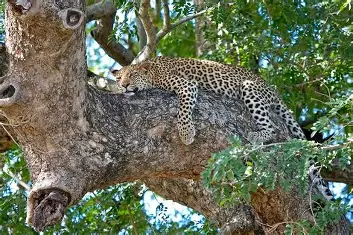
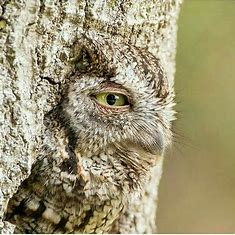
Talk about the forms, colours, and patterns you see in the forest and how they can shield animals from danger. An insect on a branch, for example, is hardly perceptible.
It’s difficult to spot a frog by the brink of a creek. Can you think of any others? It resembles an I Spy game. In your opinion, how do living things defend themselves throughout the winter?
12. Talk About How Seeds Can Move From, Place to Place

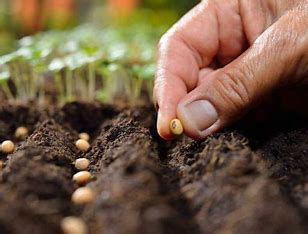
Here’s a clear explanation about how seeds can move from place to place in English:
How Seeds Travel
Seeds can’t walk, swim, or fly by themselves — but nature has clever ways of moving them so plants can grow in new places. This movement is called seed dispersal, and it can happen in several ways:
- By Wind 🌬️
- Some seeds are light, fluffy, or have wings so the wind can carry them far away.
- Examples: dandelion seeds, maple “helicopter” seeds.
- By Water 💧
- Seeds that can float travel along rivers or oceans until they reach land.
- Examples: coconut seeds, mangrove seeds.
- By Animals 🐿️🐦
- Some seeds stick to fur or feathers with tiny hooks (like burrs).
- Others are inside fruits that animals eat — the seeds pass through and grow where the animal drops them.
- By People 🚶♀️
- Seeds can hitch a ride on our clothes, shoes, or farming tools.
- We also plant seeds intentionally in gardens, farms, and parks.
- By Explosion 💥
- Some plants have pods that dry and burst open, throwing seeds away from the parent plant.
- Example: touch-me-not plant (impatiens).
If you want, I can turn this into a fun, kid-friendly illustrated chart showing each seed travel method with examples. That way it’s easy to learn and remember. Would you like me to make that?
13. Set Up an Experiment with Several Different Tree Seeds
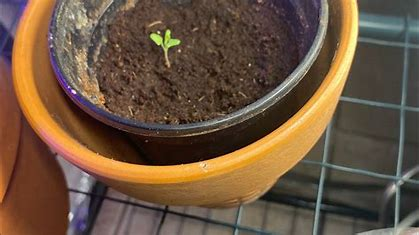
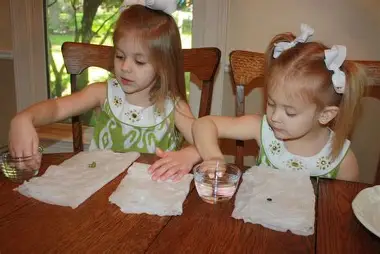
The children’s task in this experiment is to identify which seeds require a cold treatment in order to sprout. Two seeds of each tree are required. Each seed should be planted in a separate pot.
For one to three months, keep half of the pots in the windowsill and the other half in the refrigerator. After that, remove the pots from the fridge and give them plenty of water.
Check them out against the ones on the windowsill. In order to overcome seed dormancy, seeds are exposed to a predetermined quantity of cold through a procedure known as stratification.
14. Collect Various Leaves and Bark Samples
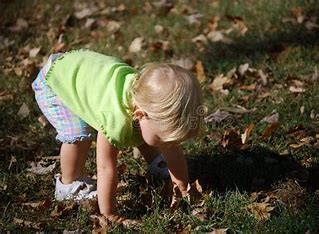
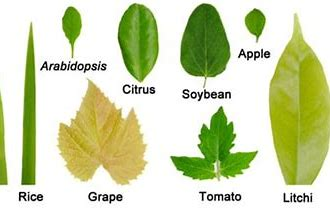
Here’s a simple guide in English for collecting various leaves and bark samples safely and responsibly:
🌿 How to Collect Leaves and Bark Samples
1. Gather Your Materials
- Notebook or field journal
- Paper or envelopes for storing leaves
- Small scissors or pruning shears
- Resealable bags for bark pieces
- Labels and a pen
- Camera or phone for photos
2. Choose Your Collection Area
- Pick a safe, legal location such as your backyard, a public park (if allowed), or a designated nature trail.
- Avoid protected areas where removing plants is not permitted.
3. Collecting Leaves
- Select healthy, undamaged leaves.
- Carefully snip one leaf (or a small cluster) from the plant without harming it.
- Press the leaf between paper sheets or store flat in a notebook until you can press it properly.
4. Collecting Bark Samples
- Only take loose bark that has naturally fallen or is peeling away — never cut deep into a living tree.
- For identification, a small piece is enough.
- Place in a labeled bag to keep it dry.
5. Label Everything
- Write down the plant’s name (if known), date, location, and any observations (leaf shape, tree height, bark texture, smell).
6. Preserve & Study
- Press leaves in a heavy book for 1–2 weeks to keep them flat.
- Store bark samples in dry containers.
- Use plant ID books or apps to learn more about your finds.
If you want, I can also give you a “Leaf & Bark Collection Chart” you can print and fill in with details, sketches, or photos for each specimen. Would you like me to prepare that?
15. Nature/Forest Scavenger Hunt
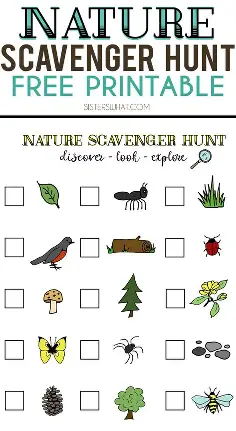

For smaller children, create a photo list or a treasure hunt list.
A feather, a small stone, an acorn, different leaves from your surroundings, a little stick or twig, a dead bug, a worm, bits of grass, cloverleaf, and any other items you can think of are some possibilities for scavenger hunts.
16. Parachute with Leaves Falling
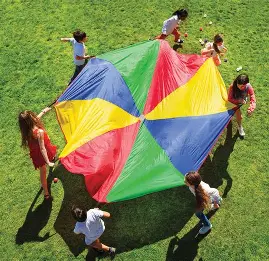
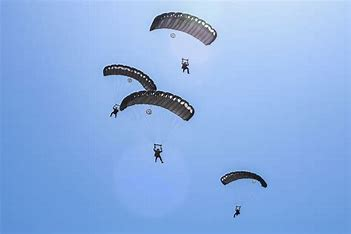
Here’s a short, clear explanation and activity idea for “Parachute with Leaves Falling” in English:
🍂 Parachute with Leaves Falling
In autumn, when leaves drop from trees, they often drift slowly through the air instead of falling straight down. This is because their shape and light weight make them act like tiny parachutes — catching the air and floating gently to the ground.
Why It Happens:
- The wide, flat shape of many leaves increases air resistance.
- Air resistance slows the fall, just like a parachute does for a person.
- This gentle descent helps seeds or insects attached to the leaves travel farther.
Fun Activity to Try:
- Collect a few different types of leaves (big, small, wide, narrow).
- Hold them above your head and drop them one by one.
- Watch how each type moves — some might twirl, some drift, and some flutter down.
- Compare which leaf “parachutes” the slowest and why.
If you like, I can also write a simple classroom science experiment sheet for “Parachute with Leaves Falling” so kids can record results and observations. Would you like me to do that?
17. Help the Birds
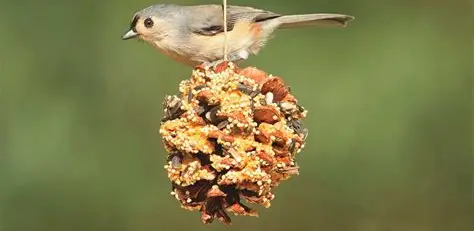
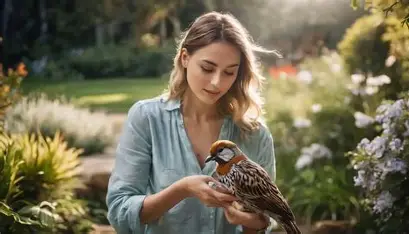
Give the birds a hand by providing them with basic nesting supplies.
Simply fill a fruit basket or a mesh bag (such as the ones used to package onions). Use stuffing from old furniture or a feather cushion, dried grass, short strands of yarn and twine, and brush hair.
To make it easier for the birds to grasp the strands, loop them outside the mesh or basket.
You can watch the birds gather and hunt to see if you can locate one of your nests by hanging the bag in a place that the birds can safely access.
18. Read Outside


Read Outside
Reading outdoors is a simple way to enjoy both a good book and the beauty of nature. Whether you sit under a shady tree, relax on a park bench, or lie on a blanket in the grass, fresh air and natural light can make reading feel extra peaceful.
Benefits of Reading Outside:
- Fresh air helps you feel more awake and focused.
- Natural surroundings reduce stress and improve mood.
- Sunlight (in safe amounts) provides vitamin D.
- The sounds of nature — birds, wind, rustling leaves — create a calming background.
Tips for a Great Outdoor Reading Time:
- Choose a comfortable spot with good light and minimal distractions.
- Bring a blanket or cushion to sit on.
- Use a bookmark to keep your place if the wind flips pages.
- Pack water and maybe a snack for longer reading sessions.
- Wear sunscreen or sit in the shade to protect your skin.
You could even make it a habit — one chapter a day outside — to combine daily reading with a little nature time.
19. Listen to the Sounds

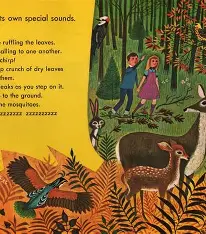
While participating in Earth Day games and crafts, play a CD of woodsy and animal noises or noises of the Rainforest; it will be calming for the kids (and you) and enriching.
20. Creating a Worm Farm for Preschoolers
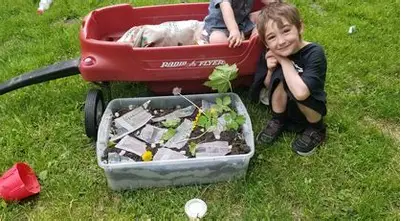
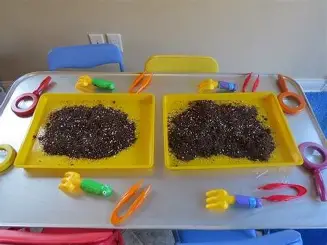
Here’s a simple, safe, and fun guide for Creating a Worm Farm for Preschoolers in English:
🐛 Creating a Worm Farm for Preschoolers
A worm farm is a wonderful hands-on activity to teach young children about recycling food scraps and helping the environment. Worms turn leftover fruit and vegetable scraps into rich compost that plants love.
Materials Needed:
- A small plastic or wooden box with a lid (shoebox-sized is perfect)
- Drill or sharp tool (for adults to make air holes)
- Damp newspaper strips (for bedding)
- A handful of compost worms (red wigglers are best)
- Fruit and vegetable scraps (no meat, dairy, or oily food)
- Spray bottle with water
Steps:
- Prepare the Box
- Adults drill a few small holes in the lid and sides for air.
- Place the box in a cool, shaded spot (indoors or outdoors).
- Make the Worm Bedding
- Tear newspaper into strips, dampen with water until soft but not soggy.
- Place the damp newspaper in the box.
- Add the Worms
- Gently place worms on top of the bedding.
- They will wiggle down to avoid the light.
- Feed the Worms
- Add small bits of fruit and veggie scraps.
- Cover scraps with more damp newspaper to keep flies away.
- Look, Learn, and Care
- Check the farm every few days.
- Spray lightly with water if bedding gets dry.
- After a few weeks, you’ll see dark, crumbly compost ready for plants.
Teaching Points for Preschoolers:
- Worms help recycle food waste.
- They make healthy soil for plants to grow.
- All living things, even tiny ones, are important to nature.
If you’d like, I can also create a colorful preschool worm farm activity sheet with step-by-step pictures so kids can follow along visually. Would you like me to make that?
21. Turn Off the Lights
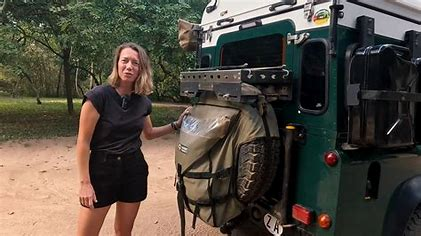

When you leave a room, turn off the lights. Burning the electricity in a room that is vacant is unnecessary.
22. Choose Energy Efficient Appliances


Choose Energy-Efficient Appliances
When shopping for appliances like refrigerators, washing machines, air conditioners, or ovens, choose models that are energy-efficient. Look for the Energy Star label or other recognized efficiency ratings. These appliances use less electricity and water, which lowers your utility bills and reduces environmental impact.
Tips for choosing energy-efficient appliances:
- Check the energy rating: Higher star ratings mean better efficiency.
- Compare annual energy consumption: Look at the estimated yearly energy use in kilowatt-hours (kWh).
- Size matters: Choose the right size for your needs—oversized appliances waste energy.
- Consider long-term savings: Energy-efficient models might cost more upfront but save money over time.
Switching to energy-efficient appliances is a simple way to save money and help protect the planet.